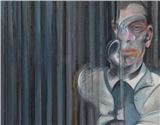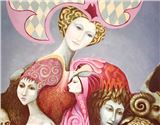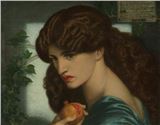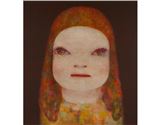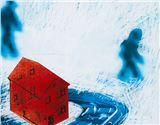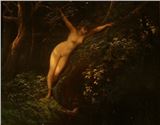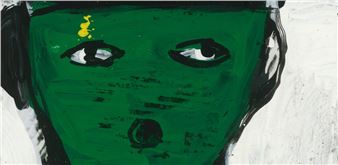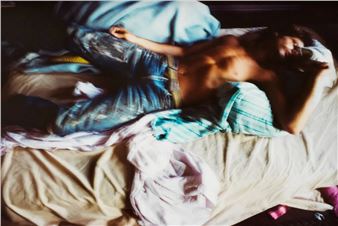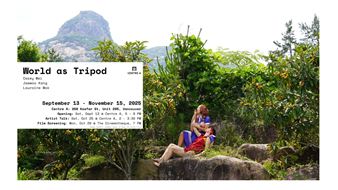Multiple Realities: Experimental Art in the Eastern Bloc, 1960s–1980s
Multiple Realities: Experimental Art in the Eastern Bloc, 1960s–1980s is an extensive survey of experimental art made in six Central-Eastern European nations between the 1960s and 1980s. Including both rarely seen and newly reconstructed works, the exhibition weaves together a complex story of artists questioning how, when and where art could exist, and exploring the varied meanings it might hold for society. Despite their geographical proximity, the artists featured in the exhibition encountered different conditions for daily life and artmaking, as they confronted varying degrees of control and pressure exerted by state authorities. Charting a generation invested in experimentation, Multiple Realities sheds light on ways that artists refused, circumvented, eluded and subverted official systems. Often infused with wit and irony, the works on view demonstrate both conceptual and formal innovation, often underpinned with an unfettered spirit of adventurousness.
Drawing on visual art, performance, music and material culture, this interdisciplinary exhibition brings together works by nearly 100 artists from East Germany, Poland, Czechoslovakia, Hungary, Romania and Yugoslavia. While it presents select canonical figures from the region, Multiple Realities places additional emphasis on lesser-known practitioners, particularly women artists, artist collectives and those exploring embodiment through an LGBTQIA+ lens. Though rooted in the recent past, the exhibition’s themes resonate today, foregrounding the question of the relationship between art and politics, and the roles that institutions play in society. How do artists negotiate their daily lives, in which authority and power are made manifest through control and surveillance? What can we learn from the production, circulation and reception of art outside of capitalist economies, and how did restrictions imposed by authoritarian regimes inform artist practices?

Recommended for you
Multiple Realities: Experimental Art in the Eastern Bloc, 1960s–1980s is an extensive survey of experimental art made in six Central-Eastern European nations between the 1960s and 1980s. Including both rarely seen and newly reconstructed works, the exhibition weaves together a complex story of artists questioning how, when and where art could exist, and exploring the varied meanings it might hold for society. Despite their geographical proximity, the artists featured in the exhibition encountered different conditions for daily life and artmaking, as they confronted varying degrees of control and pressure exerted by state authorities. Charting a generation invested in experimentation, Multiple Realities sheds light on ways that artists refused, circumvented, eluded and subverted official systems. Often infused with wit and irony, the works on view demonstrate both conceptual and formal innovation, often underpinned with an unfettered spirit of adventurousness.
Drawing on visual art, performance, music and material culture, this interdisciplinary exhibition brings together works by nearly 100 artists from East Germany, Poland, Czechoslovakia, Hungary, Romania and Yugoslavia. While it presents select canonical figures from the region, Multiple Realities places additional emphasis on lesser-known practitioners, particularly women artists, artist collectives and those exploring embodiment through an LGBTQIA+ lens. Though rooted in the recent past, the exhibition’s themes resonate today, foregrounding the question of the relationship between art and politics, and the roles that institutions play in society. How do artists negotiate their daily lives, in which authority and power are made manifest through control and surveillance? What can we learn from the production, circulation and reception of art outside of capitalist economies, and how did restrictions imposed by authoritarian regimes inform artist practices?
Artists on show
- A.E. Bizottság
- Adina Caloenescu
- AG. Geige
- Akademia Ruchu
- Aleksandar Srnec
- Alina Szapocznikow
- Ana Lupas
- Andrzej Mitan
- Andrzej Urbanowicz
- Autoperformationsartisten
- AWACS
- Bálint Szombathy
- Barbara Falender
- BogusЕ‚aw Schaeffer
- Cornelia Schleime
- Dóra Maurer
- Eugeniusz Rudnik
- Eva Kmentová
- Ewa Partum
- Florin Maxa
- Gabriele Stotzer
- Geta BrДѓtescu
- Gino Hahnemann
- Gyorgy Kemeny
- György Kovásznai
- Gyula Konkoly
- Heino Hilger
- Henryk Gajewski and Piotr Rypson
- Ion Grigorescu
- István Bakos
- Jan Dobkowski
- Jan MlДЌoch
- Jan Sagl
- Jan Slávik and Ladislav Halada
- Jana ЕЅelibská
- Janina Tworek-pierzgalska
- Janós Istvánfy
- Jaroslaw Kozlowski
- Jerzy Rosolowicz
- Jiri Kovanda
- Jolanta Marcolla
- Józef Robakowski
- Július Koller
- Jürgen Wittdorf
- Kálmán Szijártó
- Karel Miler
- Karol Radziszewski
- Károly Halász
- Karpo Godina
- Katalin Ladik
- Koloman Novak
- Krystyna Piotrowska
- Kryzys
- Krzysztof Jung
- Krzysztof Niemczyk
- Krzysztof Wodiczko
- László Fehér
- LibuЕЎe Jarcovjáková
- Lubomír BeneЕЎ
- Lubomír Durcek
- Lutz Dammbeck
- Maria PiniЕ„ska-BereЕ›
- Matei LДѓzДѓrescu
- Miha Vipotnik
- Milan AdamДЌiak
- Milan Knízák
- Natalia Lach-Lachowicz
- Orshi Drozdik
- Peter Е tembera
- Plastic People of the Universe
- Polish Radio Experimental Studio
- Sanja Ivekovic
- Serban Epure
- Simon Menner
- Stano Filko
- Teresa GierzyЕ„ska
- Teresa Murak
- Teresa Tyszkiewicz
- Tomasz Sikorski
- Tomislav Gotovac
- Tomislav Mikulic
- VД›ra Chytilová
- Vera Fischer
- Vladimir Bonacic
- Waldemar Raniszewski
- Wiktor Gutt
- Zbigniew Rybczynski
- Zdenék Sykora
- ZdeЕ€ka ДЊechová
- ЕЅeljko Jerman
- Zsuzsi UJJ
Related articles
Thirty-two years after the collapse of the Soviet Union, the exhibition Multiple Realities offers a geographically expansive introduction to the creative autonomy that existed behind the Iron Curtain.
The Vancouver Art Gallery will present Multiple Realities: Experimental Art in the Eastern Bloc, 1960s–1980s, a major survey that brings together over 100 artists from six Central Eastern European nations...
Artists in the Eastern bloc found new ways of making art during the Cold War period, responding to different living conditions and confronting varying degrees of control exerted by state authorities.

 ARTISTS
ARTISTS
